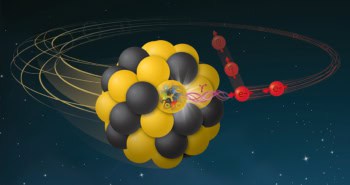By James Dacey at Sierra Negra, Mexico
Friday was the final full day of the Physics World Mexican adventure and we ended with a breathtaking experience, quite literally.
Matin and I rose early in Puebla to travel over a hundred kilometres east to the ominously named Sierra Negra volcano. This extinct beast is home to two of Mexico’s finest astrophysics facilities.
Travelling in a car with British astronomer David H Hughes, we went straight to the volcano peak, passing villages and herds of sheep along the way. Perched on top of the mountain, some 4600 m above sea level is the Large Millimeter Telescope (LMT) of which Hughes is the director and principal investigator.
Despite taking things steadily, within a short period of time Matin and I started to feel pretty light-headed and nauseous. Altitude sickness is a funny thing that creeps up on you, before intensifying and easing in waves. The shortest flight of stairs can feel like the closing stages of a marathon.
But the queasy feeling didn’t take away from the fantastic experience. In fact, the lack of oxygen coupled with the misty conditions created a surreal atmosphere I won’t forget for a long time. The video above shows me battling with the cold and nausea to chat with Hughes about the qualities of the LMT and what it’s like to work there. Being a regular frequenter of this altitude – and an active guy – Hughes seems perfectly comfortable with the conditions.
Mum, if you’re reading this, I’m back in Mexico City now at a mere 2250 m and feeling fine. In the next post on this blog Matin describes what happened when we visited to other exciting astrophysics facility on the Sierra Negra, the recently opened HAWC gamma-ray observatory.



